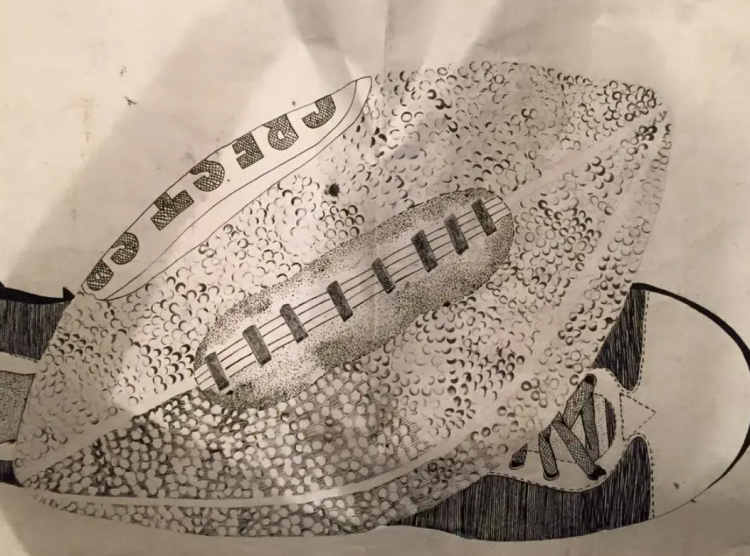“I have come to believe that a great teacher is a great artist and that there are as few as there are any other great artists. Teaching might even be the greatest of the arts since the medium is the human mind and spirit.”
– John Steinbeck
In high school, I drew the picture on the below during art class. I worked as hard as I could. I remember determinedly trying to use shading techniques like I was shown. It took a lot longer than it looks. It was one of my best pieces.

Renowned artist, Phillip Philbeck, painted this picture below. I have three of his landscapes hanging in my house. He graduated a year before I did. We had the very same art teacher, Doug Pruett. I remember Mr. Pruett’s teasing grin as he tapped his fingers on his desk saying, “I just don’t have the talent in here I had last year.”

If Mr. Pruett’s teaching abilities were judged solely on the artwork we produced, Phillip would be making him look pretty dang good. Me? Eh. I mean really, is that the best he could do with me? I should be pretty ticked in comparison.
Except that I remember Mr. Pruett as one of my greatest teachers — someone who had an impact on my life, a true artist who shaped my mind and spirit. I’m sure it took way more skill and creativity and a whole lot more patience to teach me, than it did to teach Phillip. The truth is, I could take art classes until my last breath, and I would never have landscapes hanging in anybody’s house.
But you know, since I still remember the term cross hatch and dipping a pencil eraser in ink to give my football texture, I must’ve been proud of my work. Although there’s no way to measure it on any standardized test, that’s what makes Mr. Pruett a great teacher. He recognized my individual potential and weaknesses, and yet I left his class with a lifelong confidence in my creativity and a desire to always find a way to express myself.
Mr. Pruett inspired me to be my personal best and to realize there is no one standard of beauty or one single measure of success. He could’ve crushed my spirit by holding me to Phillip’s standards (or pretty much any other kid in the class), but he chose to focus on my strengths instead.
As I recently administered standardized testing myself as a special education teacher, I thought about this a lot. I thought about it every time a student significantly affected by autism spoke one of the three words he is beginning to use to ask for something rather than take it by force. I thought about it when I was required to ask him to “solve for x” on a 7th grade math test. I thought about it when I watched tears well up in a teacher’s eyes who just gave an 8th grade reading test to many students who came to her barely reading at a 3rd grade level. I thought about it when she whispered, “What can I possibly say to convince them how much they’ve grown, when they make another Level 1 on another standardized test?” I thought about it as I tried to find words to convince her of the infinite ways she helped them grow, when they made another Level 1 on another standardized test in her class.
Not to take anything away from teachers and students who performed well—I love my Phillip Philbeck paintings. They need to be admired and gazed upon. But so do the best attempts at footballs and tennis shoes. There are some teachers whose hard work and passion and insight will never pay off in excellent test scores, but their impact will be manifested in countless other ways.
To the true artist teachers who wonder how those kids who struggle academically will know how much they’ve grown, I just wanted to tell you about Doug Pruett. If you spent every single day for nine months focusing on a child’s strengths and pouring your heart into working with the most precious of mediums, you can’t help but have positively shaped minds and spirits. I am certain that you’ve helped instill in your students a lifelong confidence in their personal worth that will stay with them long after test scores are forgotten.
Getty image by zoranm

